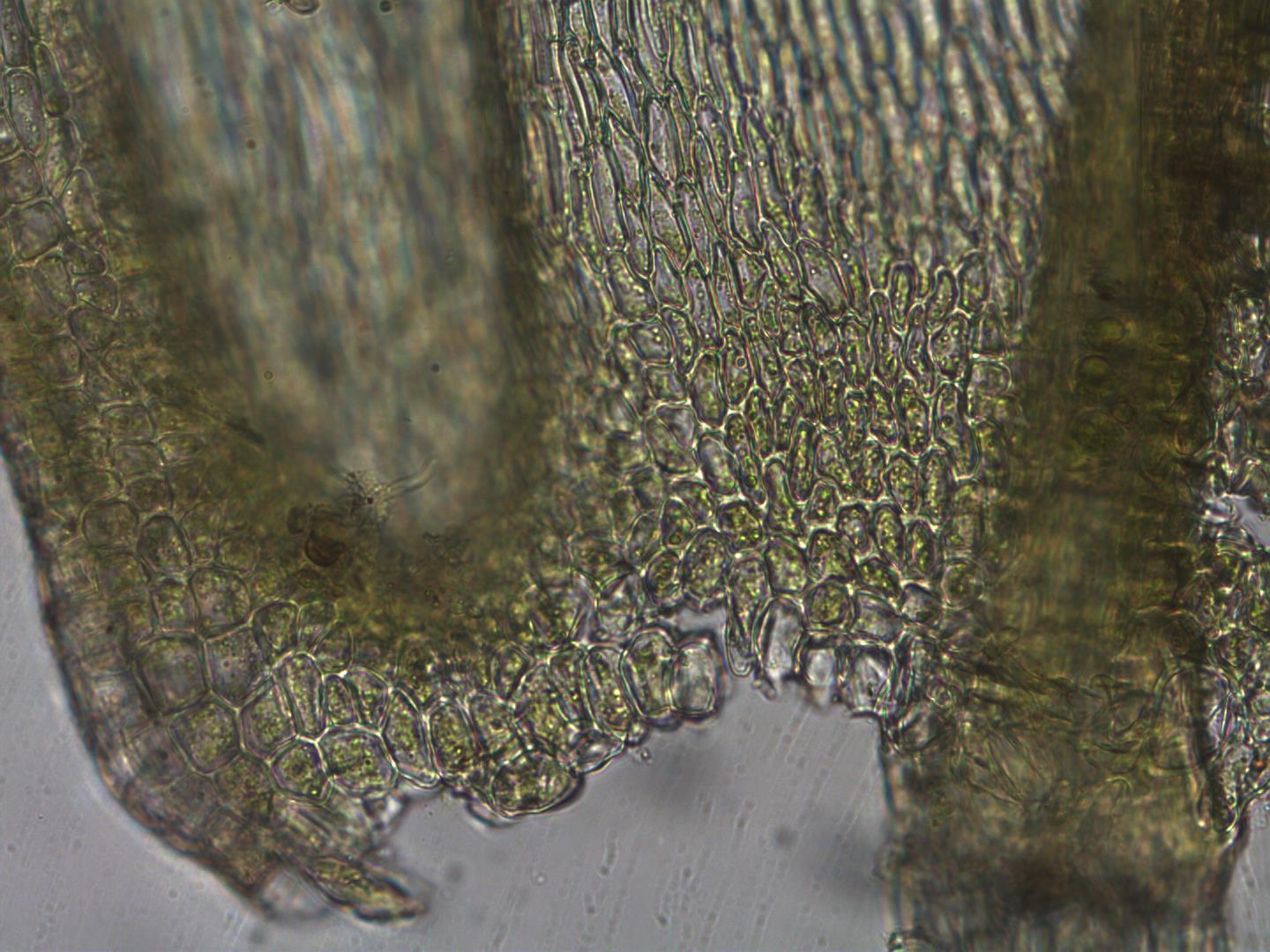
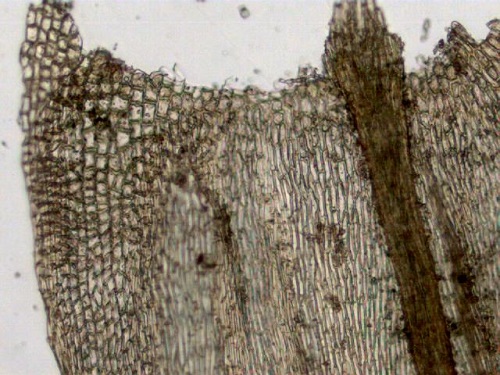
By Paul Wilson, Christina Berry and Dylan Chavarria
Department of Biology, California State University, Northridge, CA 91330-8303
paul.wilson@csun.edu
Identification of species in Homalothecium by experts involves gauging size and the tidiness of pinnate branching pattern; both characters are hard to communicate to the uninitiated however useful they are after one has experience. Even experts need to examine microscopic characters to be sure at distinguishing a few species, e.g. H. nuttallii versus H. pinnatifidum. And, sporophytes can be useful in distinguishing certain species, e.g. H. nevadense versus H. aeneum.
Plants of Homalothecium consist of stems and branches with differentiated stem leaves and branch leaves. Stems also bear rhizoids, whereas branches do not. In some specimens, in some species, the branches grow to be attenuated shag, e.g. Homalothecium nuttallii. It is generally best to compare the stem leaves of one specimen to the stem leaves of another specimen. One must avoid comparing stem leaves of one specimen to branch leaves of another. In our key we generally use stem leaves rather than branch leaves. Snip out of your specimen a terminal stem of 2 cm or at least more than 1 cm. Thoroughly moisten this bit. Pull off most of the branches and buds. It is then pretty easy to strip the stem leaves off the stem: starting about 1 cm from the distal end, pull the tips of one's forceps toward the proximal break point. It is crucial to get the full alar region including any decurrency. You might need to also examine the stem through a compound microscope to see whether there is a substantial decurrency.
When we refer to a row of cells, we mean the cells that are positioned side to side. A column of cells consist of ones positioned end to end from the proximal part of a leaf toward the distal part.
Literature
Hedenäs L, Huttenen S, Shevock JR, Norris DH. 2009. The Bryologist 112: 593-604.
A. Shortened basal cells, from alar region across to costa, 5 to 8 per a column before the spindle-shape is established distally; in branch leaves, costa extending to near the base of the acumen; branching pattern not appearing braided when dry ..... Homalothecium arenarium
A' Non-alar basal shortened cells 3 or fewer per column; in most species, costa of branch leaves shorter; in most species, branches curled upward when dry, appearing braided ..... B

|

|
| Homalothecium arenarium basal cells in 5 to 8 rows (Wilson 5519) | Homalothecium pinnatifidum basal cells in 3 or fewer rows (Coleman 828) |
B. Proximal leaf margins usually toothes, with tooth tip curved outward ..... Homalothecium nuttallii—the alar cells are numerous like H. pinnatifidum and H. californicum and unlike species treated from Couplet E on
B' Leaf margins toothless or with distal teeth that are straight ..... C
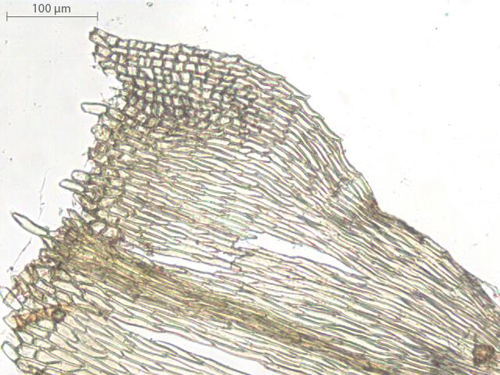
|
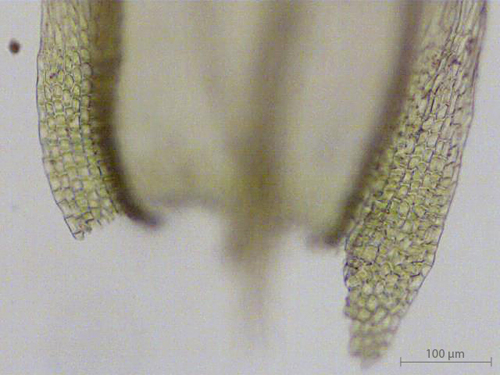
|
| Homalothecium nutallii basal recurved teeth (Wilson 5050, SFV 21569) | Homalothecium pinnatifidum basal margins without teeth (Shevock 32529, UC 1933675) |
C. Short differentiated alar cells 15 or more per column in 10 or more rows (including any short cells of the decurrency), or if somewhat fewer, then stem leaf ± auriculate and strongly decurrent ..... D
C' Differentiated alar cells fewer than 15 by 10; stem leaves at most narrowly and shortly decurrent ..... E
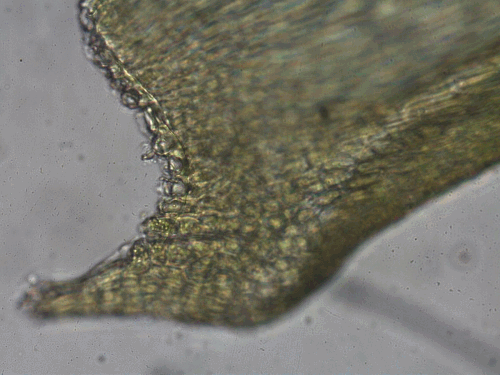
|
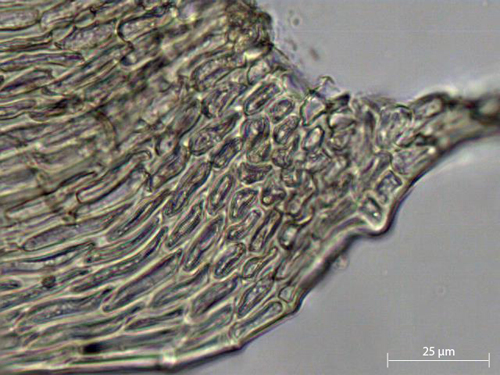
|
| Homalothecium californicum short alar cells >15 x 10 (Coleman 1594) | Homalothecium fulgescens (Wilson 4999 SFV 21579) |
D. Stem leaf alar cells 6-9 μm wide; main stems up to 15 cm long, stem leaves 3-4 mm long; stem leaves strongly decurrent; costa lacking a terminal spine ..... Homalothecium californicum—most people will have already met H. pinnatifidum and will be startled by how large H. californicum appears by comparison
D' Stem leaf alar cells 9-14 μm wide; plant smaller, stem leaves 1.3-2 mm long; leaves narrowly and shortly decurrent; costa often ending in an abaxial spine ..... Homalothecium pinnatifidum
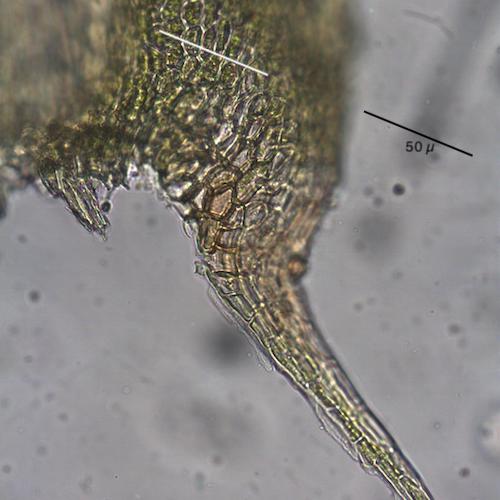
|
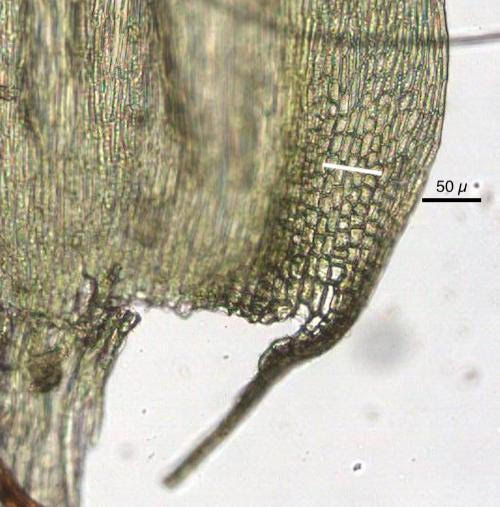
|
| Homalothecium californicum leaves broadly decurrent with smaller cells (Coleman 163) | Homalothecium pinnatifidum leaves narrowly decurrent with larger cells (Palmer 102) |
E. Cells of alar region (except the most basal ones) longer than 3:1; plants obviously regularly pinnately branched with branches ± straight when dry; plants large with stem leaves more than 3.5 mm long by 1.0 mm wide ..... Homalothecium megaptilum—a species of far northern California and beyond ..... F
E' Alar cells (or at least many of them) shorter than 3:1; branches curled when dry, plants smaller or not obviously pinnate; leaves smaller or relatively narrow ..... F
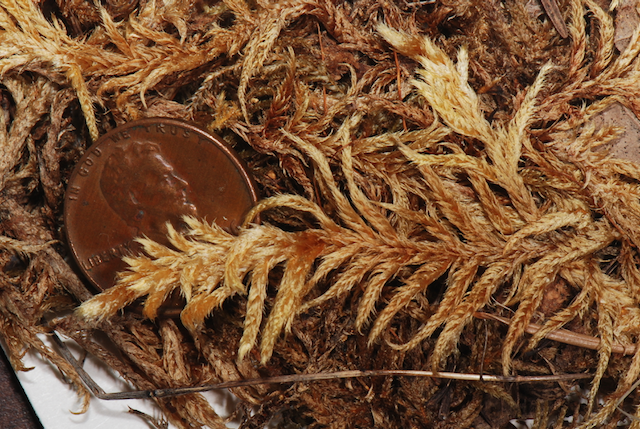
|
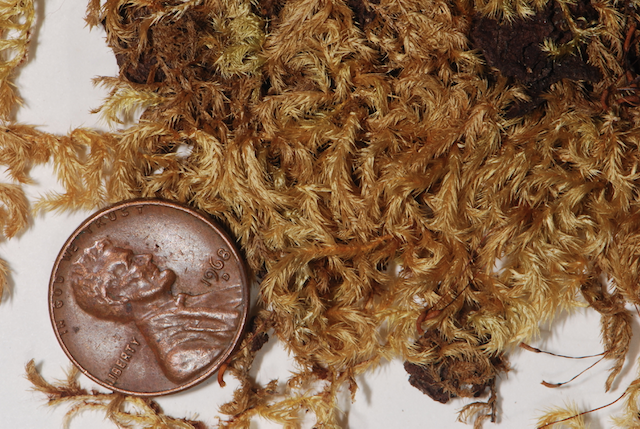
|
| Homalothecium megaptilum branching obviously pinnate (Norris 78463, SFV 20907) | Homalothecium fulgescens branches of varying lengths (Norris 75064, UC 1650214) |
F. Branches very unequal, so not regularly pinnate; branch-leaf (and stem-leaf) tips long accuminate, the narrow part very long, spreading when dry; generally epiphytic; mature capsules curved .....Homalothecium fulgescens
F' Branches when dry appearing pinnate; branch-leaf leaf tips acute but not quite so fine tipped, ± appressed when dry; more often than not on rocks or soil; mature capsules close to straight ..... G
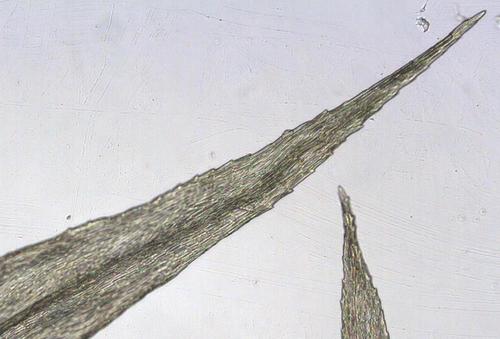
|
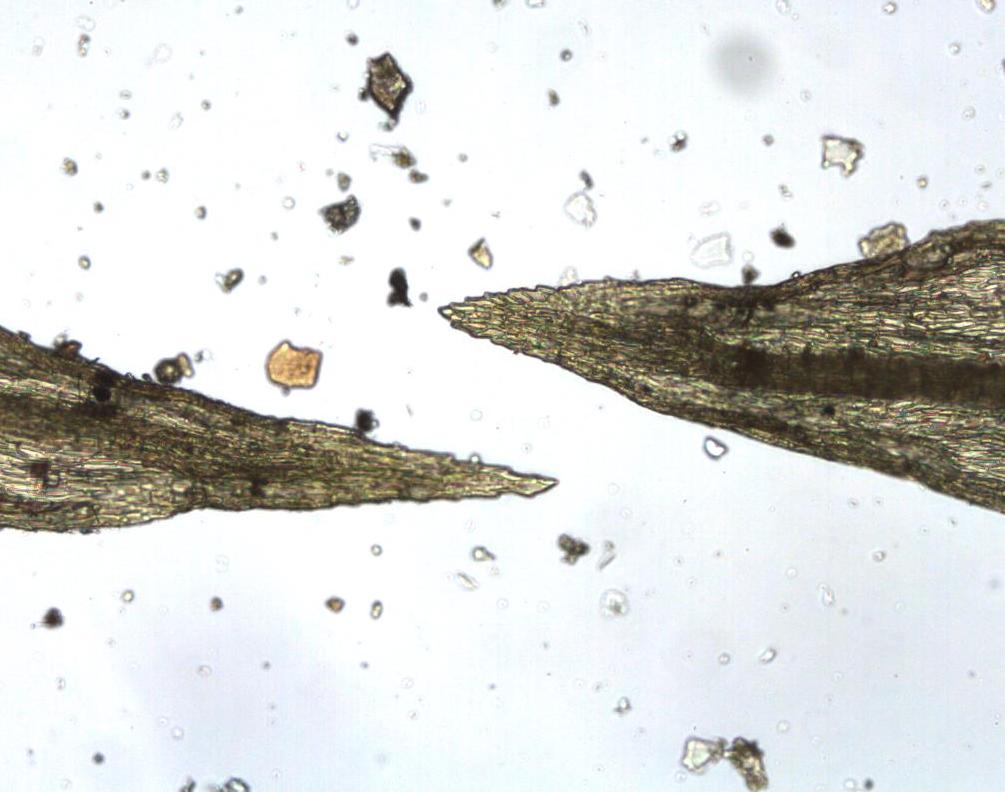
|
| Homalothecium fuglescens narrow tips of branch leaves (Coleman 527) | Homalothecium nevadense branch-leaf tips a bit broader (Coleman 893) |
G. Alar cell walls thickened and cells overlapping, alar region more opaque than surrounding cell regions; capsules at most slightly curved; operculum long conic to rostrate; cilia of endostome short to absent ..... Homalothecium nevadense—a species whose southern range limit reaches Southern California
G' Alar cells with walls of ordinary thickness (thickness like the other cells of the leaf), alar region not differentiated as opaque; capsules curved; operculum conic; cilia of endostome long ..... Homalothecium aeneum
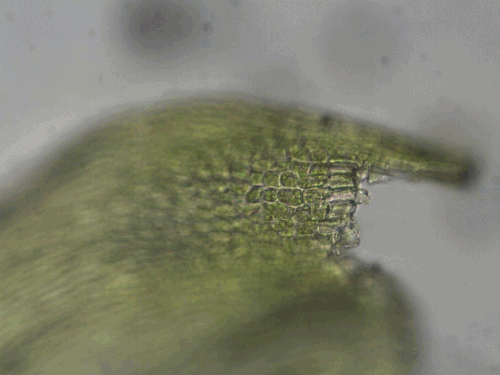
|
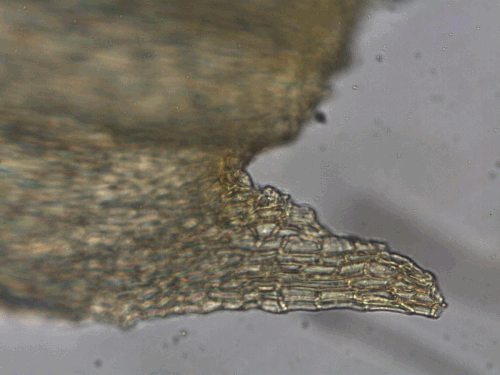
|
| Homalothecium nevadense walls thickened, cells staggered and overlapping (Palmer 22April2019_waypoint631) | Homalothecium aeneum walls of ordinary thickness, cells aligned (Coleman 938) |